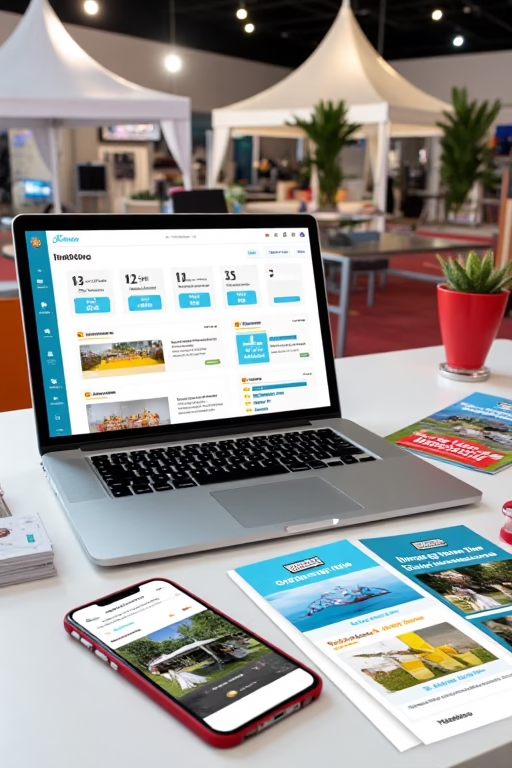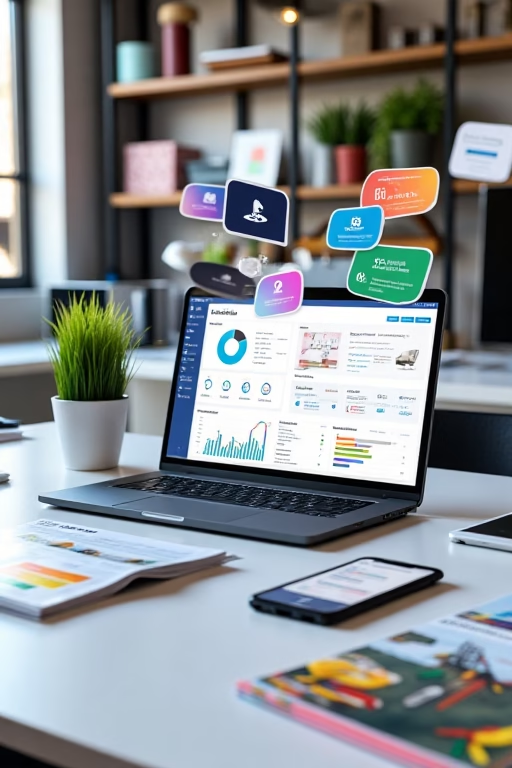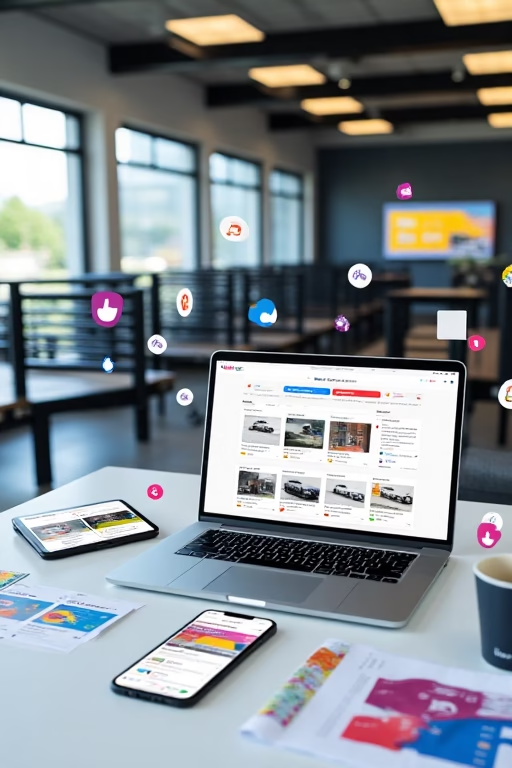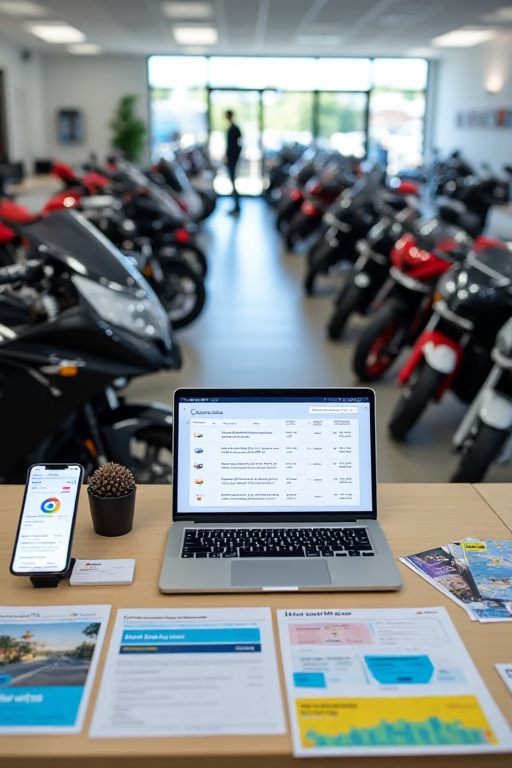How to Sell Fitness Equipment Online Without Flagging Ads
How to Sell Fitness Equipment Online Without Flagging Ads
In the competitive world of e-commerce, selling fitness equipment online presents a lucrative opportunity. However, navigating the complexities of online advertising can be challenging, especially with strict ad policies that can lead to flagging or banning of your ads. This comprehensive guide explores effective strategies to sell fitness equipment online without flagging your ads, ensuring a smooth and successful online sales experience.
From understanding advertising platform policies to optimizing your product listings and leveraging alternative marketing channels, this guide provides actionable insights to help you maximize your online sales while maintaining compliance with advertising standards.
Table of Contents
2. Understanding Ad Platform Policies
To sell fitness equipment online without flagging your ads, it's essential to understand and adhere to the advertising policies of the platforms you use. Each platform has its own set of rules and guidelines designed to maintain a safe and trustworthy environment for users.
2.1 Facebook Ads Policy
Facebook is one of the most popular platforms for advertising fitness equipment. To ensure your ads are compliant and avoid flagging, familiarize yourself with Facebook's advertising policies.
- Prohibited Content: Avoid advertising products that promote unrealistic body images, use before-and-after images, or make exaggerated claims about health benefits.
- Restricted Content: Certain types of fitness equipment, such as supplements or equipment making medical claims, may require prior approval.
- Ad Creative: Use high-quality images that accurately represent your products. Avoid overly cluttered visuals and ensure that text doesn't cover more than 20% of the image.
- Targeting: Ensure your ad targeting complies with Facebook's policies, avoiding discriminatory practices based on health conditions or body types.
- Example: "When advertising a home gym setup, use clear and professional images showcasing the equipment in use without making unrealistic fitness claims, and ensure all text overlays are minimal and compliant with Facebook's guidelines."
2.2 Google Ads Policy
Google Ads offers extensive reach but comes with stringent policies to prevent misleading or harmful advertising.
- Prohibited Content: Avoid claims that guarantee specific health outcomes or imply that your fitness equipment can cure or prevent diseases.
- Editorial Standards: Ensure your ads are free from spelling and grammar errors, use proper capitalization, and follow the platform's style guidelines.
- Landing Page Quality: Your landing pages should provide clear, accurate information about the fitness equipment, including specifications, pricing, and honest user reviews.
- Ad Copy: Write honest and clear ad copy that accurately represents your products without exaggeration.
- Example: "A Google Ads campaign for a treadmill should focus on features like durability, warranty, and user-friendly controls without making exaggerated promises about weight loss or health improvements."
2.3 Instagram Ads Policy
Instagram, owned by Facebook, shares similar advertising policies but is more visual-centric. Compliance is crucial to avoid ad rejection.
- Visual Content: Use high-resolution images that highlight the design and functionality of your fitness equipment. Avoid using images that depict violence or nudity.
- Text Overlay: Similar to Facebook, keep text overlays minimal and ensure they don't exceed 20% of the image space.
- Targeting: Be mindful of targeting options to avoid restrictions related to body image or health-related targeting.
- Story Ads: When using Instagram Stories for ads, ensure your content is engaging but adheres to the platform's guidelines regarding fitness claims and imagery.
- Example: "An Instagram ad for yoga mats should feature serene and clean visuals, focusing on the product's quality and eco-friendliness without making exaggerated health claims."
3. Optimizing Product Listings
Creating optimized product listings is crucial for both organic search visibility and ad compliance. Well-structured listings attract more customers and reduce the risk of ad flagging.
3.1 High-Quality Images
Images are a vital component of your product listings. High-quality visuals can significantly influence purchasing decisions and ensure your ads comply with platform standards.
- Clear and Detailed: Use clear, high-resolution images that showcase the fitness equipment from multiple angles. Highlight key features and functionalities.
- Consistent Lighting: Ensure consistent lighting across all images to maintain a professional appearance.
- Background: Use neutral backgrounds that focus attention on the product. Avoid cluttered or distracting backgrounds.
- Zoom Capability: Allow customers to zoom in on images to inspect details closely, enhancing their confidence in the product.
- Example: "A home gym package listing should include high-resolution images of each piece of equipment, showing close-ups of materials and features, with a consistent lighting setup and clean backgrounds to highlight the products effectively."
3.2 Detailed Descriptions
Comprehensive product descriptions provide essential information that helps customers make informed decisions. They also play a crucial role in SEO by incorporating relevant keywords.
- Feature Highlights: Clearly outline the key features and benefits of each fitness equipment piece. Use bullet points for easy readability.
- Specifications: Include detailed specifications such as dimensions, weight, materials, and any technical details that are important to the user.
- Usage Instructions: Provide clear instructions on how to use the equipment safely and effectively.
- Maintenance Tips: Offer tips on maintaining and cleaning the equipment to ensure longevity.
- Example: "A detailed description for a resistance band set should include the different resistance levels, materials used, recommended exercises, safety tips, and maintenance instructions, all while naturally integrating relevant keywords like 'durable resistance bands' and 'home workout equipment.'
3.3 Pricing Strategies
Competitive and transparent pricing can attract more customers and enhance trust in your brand. Effective pricing strategies also help you comply with advertising policies by avoiding misleading price representations.
- Competitive Analysis: Research competitors’ pricing to ensure your prices are competitive while maintaining profitability.
- Transparent Pricing: Clearly display the price of each fitness equipment item without hidden fees or misleading discounts.
- Bundling Offers: Offer bundled packages of fitness equipment at a discounted rate to encourage higher sales volumes.
- Promotions and Discounts: Run occasional promotions or discounts to attract new customers and reward loyal ones.
- Example: "A fitness equipment retailer offers a discounted bundle of a treadmill, stationary bike, and set of dumbbells, clearly stating the total price and the savings compared to purchasing each item separately, thus encouraging customers to buy more while maintaining transparency."
4. Ad Compliance Tips
Ensuring your ads comply with platform policies is essential to avoid flagging and maintain a consistent advertising presence. Here are some key tips to achieve ad compliance.
4.1 Avoiding Prohibited Content
Each advertising platform has a list of prohibited content that must be strictly avoided. Violating these can lead to ad rejection or account suspension.
- Misleading Claims: Avoid making exaggerated or unverified claims about the effectiveness of your fitness equipment, such as guaranteed weight loss or health improvements.
- Inappropriate Images: Do not use images that are violent, sexually explicit, or otherwise inappropriate as per platform guidelines.
- Unverified Testimonials: Ensure that any testimonials or reviews used in your ads are genuine and verifiable to maintain trust and comply with policies.
- Example: "When advertising a new line of kettlebells, avoid claims like 'Lose 10 pounds in a week' and focus on legitimate benefits such as 'Build strength and improve cardiovascular health with our premium kettlebells.'
4.2 Following Best Practices
Adhering to best practices ensures that your ads are effective and compliant with platform standards.
- Clear and Honest Messaging: Ensure that your ad copy accurately represents your products and services without misleading information.
- Proper Formatting: Follow the platform’s guidelines for ad formatting, including character limits, image sizes, and aspect ratios.
- Relevance: Ensure that your ads are relevant to the target audience and the keywords you are bidding on, enhancing user experience and ad performance.
- Example: "A social media ad for a rowing machine should include a clear headline like 'Boost Your Cardio with Our Premium Rowing Machines,' adhere to image size specifications, and use concise, relevant messaging that aligns with user search intent."
4.3 Monitoring Ad Performance
Regularly monitoring your ad performance helps you identify and rectify compliance issues before they escalate.
- Regular Audits: Conduct regular audits of your ads to ensure ongoing compliance with platform policies.
- Feedback Loops: Utilize feedback from ad platforms to understand any issues and make necessary adjustments.
- Automated Tools: Use automated compliance tools and software that can scan your ads for policy violations before submission.
- Example: "A fitness equipment seller uses Google Ads' policy checker tool to review their ad content for compliance issues before launching campaigns, ensuring that all ads meet Google’s standards and reduce the risk of flagging."
5. Leveraging Alternative Marketing Channels
While paid ads are effective, relying solely on them can be risky due to potential flagging or suspension. Diversifying your marketing efforts ensures a steady stream of traffic and sales.
5.1 Email Marketing
Email marketing remains one of the most effective ways to reach and engage your audience. It allows for personalized communication and can drive repeat business.
- Building a Subscriber List: Collect email addresses through your website, social media, and in-person events. Offer incentives like discounts or exclusive content to encourage sign-ups.
- Segmenting Your Audience: Categorize your subscribers based on their interests, purchase history, and engagement levels to send targeted and relevant emails.
- Personalized Content: Craft personalized emails that address the specific needs and preferences of your subscribers, such as recommending fitness equipment based on their previous purchases.
- Automated Campaigns: Use automated email sequences for welcome messages, post-purchase follow-ups, and re-engagement campaigns to maintain consistent communication.
- Example: "A fitness equipment retailer sends a welcome email to new subscribers offering a 10% discount on their first purchase, followed by a series of emails highlighting popular products and customer testimonials, fostering engagement and encouraging sales."
5.2 Content Marketing
Content marketing helps establish your authority in the fitness equipment industry, attract organic traffic, and engage potential customers with valuable information.
- Blogging: Maintain a blog with articles on topics like 'Top 10 Fitness Equipment for Home Gyms,' 'How to Choose the Right Treadmill,' and 'Benefits of Strength Training Equipment.'
- Video Content: Create videos demonstrating the use of your fitness equipment, workout routines, and maintenance tips. Video content is highly engaging and can be shared across multiple platforms.
- Infographics: Develop infographics that visually represent data and information related to fitness equipment, such as 'Comparing Different Types of Dumbbells' or 'The Evolution of Fitness Machines.'
- E-books and Guides: Offer comprehensive e-books or guides on setting up a home gym, optimizing workouts with the right equipment, and maintaining fitness gear.
- Example: "A fitness equipment company publishes a blog post titled 'Setting Up Your Home Gym: Essential Equipment and Tips,' which incorporates SEO-friendly keywords and provides valuable insights to attract and educate potential customers."
6. Building a Strong Online Presence
A robust online presence enhances your credibility, attracts more visitors to your website, and supports your overall marketing efforts.
6.1 Website Optimization
Your website is the central hub of your online presence. Optimizing it ensures a seamless user experience and improves your search engine rankings.
- Responsive Design: Ensure your website is mobile-friendly, providing a seamless experience across all devices.
- Fast Load Times: Optimize images, leverage browser caching, and minimize code to ensure your website loads quickly, reducing bounce rates.
- Clear Navigation: Design intuitive navigation menus that make it easy for users to find products, information, and contact details.
- Secure Transactions: Implement SSL certificates and secure payment gateways to protect customer data and build trust.
- Example: "A fitness equipment store ensures their website is fully responsive, loads within three seconds, and features a clear navigation bar with categories like 'Cardio Equipment,' 'Strength Training,' and 'Accessories,' enhancing user experience and SEO."
6.2 SEO Strategies
Effective SEO strategies are essential for increasing your website’s visibility in search engine results, driving organic traffic, and boosting sales.
- Keyword Research: Identify relevant keywords that potential customers use when searching for fitness equipment. Use tools like Google Keyword Planner, SEMrush, or Ahrefs to discover high-traffic, low-competition keywords.
- On-Page SEO: Optimize your website’s on-page elements, including title tags, meta descriptions, header tags, and image alt texts, with your target keywords.
- Content Optimization: Ensure your website content is comprehensive, informative, and incorporates relevant keywords naturally. Avoid keyword stuffing.
- Local SEO: Implement local SEO strategies such as optimizing for local keywords, creating location-specific landing pages, and managing local listings to attract nearby customers.
- Example: "A fitness equipment retailer targets keywords like 'buy home gym equipment,' 'best treadmills online,' and 'affordable dumbbells,' incorporating them into product descriptions, blog posts, and meta tags to improve their search engine rankings."
6.3 Customer Reviews
Customer reviews play a significant role in building trust and influencing purchasing decisions. They also contribute to your SEO by providing fresh, user-generated content.
- Encouraging Reviews: Actively encourage satisfied customers to leave reviews on platforms like Google, Yelp, and your website. Follow up with email requests after purchases.
- Responding to Reviews: Respond to all reviews, thanking customers for positive feedback and addressing any concerns raised in negative reviews professionally.
- Displaying Reviews: Showcase positive reviews on your website and in your marketing materials to build credibility and trust with potential customers.
- Example: "A fitness equipment store sends a follow-up email after each purchase asking for a review, responds promptly to all feedback, and displays top reviews on their homepage and product pages to enhance trust and SEO."
7. Managing Customer Relations
Effective customer relations management fosters loyalty, encourages repeat business, and generates positive word-of-mouth referrals, all of which contribute to your online success.
7.1 Excellent Customer Service
Providing outstanding customer service ensures that your customers are satisfied and more likely to recommend your business to others.
- Responsive Communication: Respond to customer inquiries and issues promptly through multiple channels such as email, phone, and live chat.
- Knowledgeable Support: Train your support team to be well-versed in your fitness equipment offerings, enabling them to provide accurate and helpful information.
- After-Sales Support: Offer after-sales support, including installation guides, usage tips, and troubleshooting assistance to enhance the customer experience.
- Example: "A fitness equipment retailer provides a live chat feature on their website where customers can get immediate assistance with product questions or order issues, ensuring a seamless and supportive purchasing experience."
7.2 Loyalty Programs
Loyalty programs reward repeat customers and encourage ongoing engagement with your brand, fostering long-term relationships.
- Rewards Points: Implement a points-based system where customers earn points for every purchase, which can be redeemed for discounts or free products.
- Exclusive Offers: Provide members-only discounts, early access to new products, and special promotions to incentivize loyalty.
- Referral Bonuses: Encourage customers to refer friends and family by offering rewards for each successful referral.
- Example: "A fitness equipment store launches a loyalty program where customers earn points for every dollar spent, receive exclusive discounts on new product launches, and get rewarded for referring friends, thereby increasing customer retention and sales."
7.3 Handling Feedback
Customer feedback provides valuable insights into your business’s strengths and areas for improvement. Effectively managing and acting on feedback can enhance your products and services.
- Collecting Feedback: Use surveys, feedback forms, and direct communication to gather input from your customers about their experiences.
- Analyzing Feedback: Regularly review and analyze feedback to identify common themes, issues, and opportunities for improvement.
- Implementing Changes: Use the insights gained from feedback to make informed decisions about product development, customer service enhancements, and marketing strategies.
- Example: "A fitness equipment retailer notices recurring feedback about the difficulty of assembling certain products. They respond by creating detailed assembly videos and updating product manuals, thereby improving the customer experience and reducing support inquiries."
8. Conclusion
Selling fitness equipment online without flagging your ads requires a strategic approach that combines compliance with advertising policies, optimization of product listings, leveraging alternative marketing channels, and building a strong online presence. By implementing the strategies outlined in this guide, you can effectively market your fitness equipment, attract more customers, and drive online sales while maintaining a positive advertising experience.
Remember, the key to successful online sales lies in delivering value, maintaining transparency, and continuously adapting your strategies based on market trends and customer feedback. With dedication and the right strategies, your fitness equipment business can thrive in the competitive online marketplace.
Frequently Asked Questions (FAQ)
1. What are the main reasons my fitness equipment ads get flagged?
Ads can be flagged for violating platform policies, including misleading claims, inappropriate content, excessive text in images, and targeting prohibited categories. Ensuring compliance with each platform’s guidelines is crucial to prevent flagging.
2. How can I ensure my fitness equipment ads comply with Google Ads policies?
To comply with Google Ads policies, avoid making exaggerated claims, use high-quality and relevant images, ensure accurate product descriptions, and follow the platform’s guidelines for ad formatting and content.
3. What types of fitness equipment are allowed in online ads?
Most fitness equipment, including treadmills, dumbbells, resistance bands, and stationary bikes, are allowed. However, equipment that makes medical claims or is associated with prohibited content may require additional approval.
4. Can I use before-and-after images in my ads?
Before-and-after images are often scrutinized for making unrealistic promises or body image claims. It’s best to use images that accurately represent the product without implying guaranteed results.
5. How important are product descriptions for ad compliance?
Product descriptions are crucial for ad compliance as they provide accurate and honest information about the product. Well-written descriptions help prevent misleading claims and ensure that your ads meet platform standards.
6. What is the ideal image-to-text ratio for ad images?
Many platforms, like Facebook, recommend keeping text overlays on images to under 20% to improve ad performance and avoid flagging. Tools like Facebook’s Text Overlay Tool can help ensure compliance.
7. How can I use keywords effectively in my fitness equipment listings?
Incorporate relevant keywords naturally into your product titles, descriptions, meta tags, and blog content. Focus on terms that potential customers are likely to search for, such as "home gym equipment," "buy treadmills online," and "affordable dumbbells."
8. Should I focus on SEO or paid ads for selling fitness equipment?
Both SEO and paid ads are important for a balanced online marketing strategy. SEO provides long-term organic traffic, while paid ads offer immediate visibility. Combining both can maximize your reach and sales potential.
9. What are some effective content marketing ideas for fitness equipment?
Create blog posts, how-to guides, workout routines, product comparison articles, video tutorials, and infographics that provide value to your audience and incorporate relevant keywords to boost SEO.
10. How can social media influence my fitness equipment sales?
Social media platforms allow you to showcase your products visually, engage with your audience, run targeted ads, and collaborate with influencers, all of which can drive traffic to your website and increase sales.
11. What role do customer reviews play in selling fitness equipment online?
Customer reviews build trust and credibility, influence purchasing decisions, and contribute to your SEO by providing fresh, user-generated content that search engines value.
12. How can I handle negative reviews effectively?
Respond professionally to negative reviews by acknowledging the issue, apologizing for any inconvenience, and offering a solution or further assistance. This demonstrates your commitment to customer satisfaction.
13. What are the benefits of using email marketing for fitness equipment sales?
Email marketing allows for personalized communication, promotes repeat business, shares updates and promotions, and nurtures leads through targeted campaigns, all of which can drive sales and customer loyalty.
14. How do I create effective Facebook ads for fitness equipment?
Create visually appealing ads with high-quality images, clear and concise ad copy, and strong call-to-actions. Target your ads to specific demographics and interests relevant to your fitness equipment to maximize relevance and engagement.
15. Can influencer marketing help sell fitness equipment online?
Yes, collaborating with fitness influencers can enhance your brand’s credibility, reach a larger audience, and drive sales through authentic and trusted endorsements.
16. What are some common mistakes to avoid when selling fitness equipment online?
Avoid using misleading claims, neglecting SEO, poor-quality images, not optimizing for mobile, ignoring customer reviews, and failing to comply with ad platform policies.
17. How important is mobile optimization for my online fitness equipment store?
Mobile optimization is crucial as a significant portion of online shopping is done via mobile devices. A mobile-friendly website improves user experience, reduces bounce rates, and is favored by search engines in rankings.
18. How can I use Google My Business for selling fitness equipment?
While primarily for local businesses, optimizing your Google My Business profile can enhance your local SEO, display customer reviews, and provide essential information to local customers searching for fitness equipment.
19. What is the role of backlinks in SEO for fitness equipment sales?
Backlinks from reputable websites signal to search engines that your site is authoritative and trustworthy, improving your search rankings and driving organic traffic to your online store.
20. How can I create engaging video content for my fitness equipment?
Create videos that demonstrate the use of your equipment, offer workout routines, share customer testimonials, and provide maintenance tips. Ensure the content is high-quality, informative, and visually appealing to engage your audience effectively.
21. Should I offer financing options for my fitness equipment?
Offering financing options can make your fitness equipment more accessible to a broader audience, increasing sales and customer satisfaction by providing flexible payment solutions.
22. How can I use retargeting to boost fitness equipment sales?
Implement retargeting campaigns to reach users who have previously visited your website but did not make a purchase. Show them targeted ads to remind them of your products and encourage them to return and complete their purchase.
23. What are the best platforms to sell fitness equipment online?
Popular platforms include your own e-commerce website, Amazon, eBay, Facebook Marketplace, and specialized fitness equipment marketplaces. Each platform has its own benefits and audience reach.
24. How can I improve the checkout process on my online store?
Ensure a seamless and secure checkout process by minimizing the number of steps, offering multiple payment options, providing clear shipping information, and ensuring that the process is mobile-friendly.
25. How important is branding in selling fitness equipment online?
Strong branding helps differentiate your products, build customer trust, and create a memorable impression. Consistent branding across your website, ads, and marketing materials enhances your credibility and attracts loyal customers.
25 Relevant Keywords
- Sell Fitness Equipment Online
- Avoid Ad Flagging Fitness
- Online Fitness Equipment Sales
- Fitness Equipment Marketing
- E-commerce Fitness Gear
- Ad Compliance Fitness
- SEO for Fitness Equipment
- Social Media Fitness Sales
- Email Marketing Fitness Equipment
- Google Ads Fitness
- Facebook Ads Fitness
- Instagram Fitness Sales
- Content Marketing Fitness Equipment
- Influencer Marketing Fitness
- Fitness Equipment Listings
- Online Store Fitness Gear
- Secure Online Fitness Sales
- Fitness Equipment Branding
- Customer Reviews Fitness Equipment
- Local SEO Fitness Sales
- Video Marketing Fitness Equipment
- PPC Advertising Fitness
- Retargeting Fitness Ads
- CRM for Fitness Sales
- Mobile Optimization Fitness Equipment
- Fitness Equipment Promotions
How to Sell Fitness Equipment Online Without Flagging Ads Read More »













5.3 Social Media Marketing
Social media platforms offer vast opportunities to connect with your audience, showcase your products, and build a community around your brand.